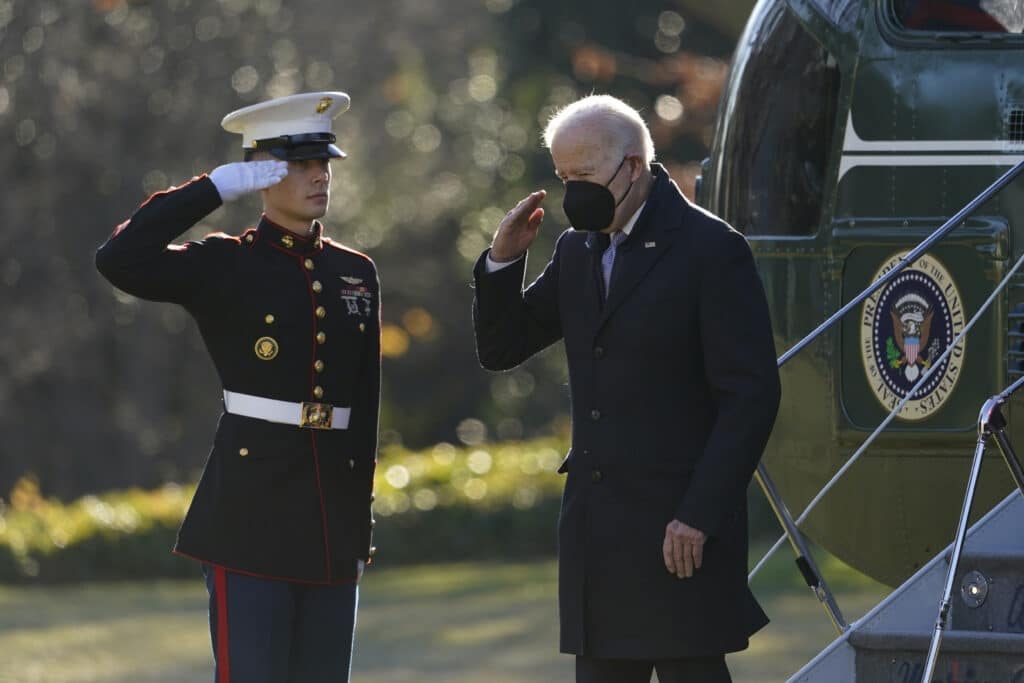New vehicles are going to need 25% higher fuel efficiency than they did during the Trump administration, thanks to a new rule going into effect from the Biden administration. This is even higher than what the EPA was proposing. The Associated Press has the story:
New cars will need to achieve 40 miles per gallon by 2026
WASHINGTON (AP) — In a major step to fight climate change, the Biden administration is raising vehicle mileage standards to significantly reduce emissions of planet-warming greenhouse gases.
A final rule being issued Monday would raise mileage standards starting in the 2023 model year, reaching a projected industry-wide target of 40 miles per gallon by 2026 — 25% higher than a rule finalized by the Trump administration last year and 5% higher than a proposal by the Environmental Protection Agency in August.
“We are setting robust and rigorous standards that will aggressively reduce the pollution that is harming people and our planet – and save families money at the same time,” EPA Administrator Michael Regan said in a statement.
Regan called the rule “a giant step forward” in delivering on President Joe Biden’s climate agenda “while paving the way toward an all-electric, zero-emissions transportation future.″
The move comes a day after Democratic Sen. Joe Manchin delivered a potentially fatal blow to Biden’s $2 trillion social and environmental policy bill, jeopardizing Democrats’ agenda and infuriating the White House. The West Virginia senator said he could not support the sweeping bill, which includes a host of climate proposals, saying it was too expensive and could spark inflation and expand the growing federal debt.
The mileage rules set to be announced Monday are the most ambitious tailpipe pollution standards ever set for passenger cars and light trucks. The standards raise mileage goals set by the Trump administration that would achieve only 32 miles per gallon in 2026. Biden had set a goal of 38 miles per gallon in August.
The standards also will help expand the market share of zero emissions vehicles, the administration said, with a goal of battery electric and plug-in hybrid vehicles reaching 17% of new vehicles sold in 2026. EVs and plug-in hybrids are expected to have about 7% market share in 2023.
The EPA said the rule would not only slow climate change, but also improve public health by reducing air pollution and lower costs for drivers through improved fuel efficiency.

Biden has set a goal of cutting U.S. greenhouse gas emissions by at least half by 2030 as he pushes a history-making shift in the U.S. from internal combustion engines to battery-powered vehicles.
He has urged that components needed to make that sweeping change — from batteries to semiconductors — be made in the United States, too, aiming for both industry and union support for the environmental effort, with the promise of new jobs and billions in federal electric vehicle investments.
While ambitious, the new standards provide adequate lead time for auto manufacturers to comply at reasonable costs, the administration said. EPA’s analysis shows the industry can comply with the final standards with modest increases in the numbers of electric vehicles entering the fleet.
Auto makers continue to invest in and develop zero-emissions vehicles to meet rising consumer demand, while making public commitments to build these vehicles in the future, the EPA said. As tailpipe-pollution standards get stronger over four years, sales of EVs and plug-in hybrid vehicles will more than double, the administration projected.
“Making cars cleaner is critical to address climate change,″ the EPA said. Transportation is the single largest source of greenhouse gas emissions in the United States, making up 29% of all emissions. Within the transportation sector, passenger cars and trucks are the largest contributor, accounting for 58% of all transportation-related emissions and 17% of overall U.S. carbon emissions.
The final standards will contribute toward a goal set by the 2015 Paris climate agreement to keep the increase in the global average temperature to well below 2° Celsius above pre-industrial levels, the EPA said. The U.S. rejoined the Paris agreement on Biden’s first day in office after former President Donald Trump had withdrawn the U.S. from the global pact.
The new rules would begin with the 2023 car model year and increase emissions reductions year by year through model year 2026. The rule accelerates the rate of emissions reductions to between 5 and 10% each year from 2023 through 2026, the EPA said, far higher than under previous rules.
By MATTHEW DALY






